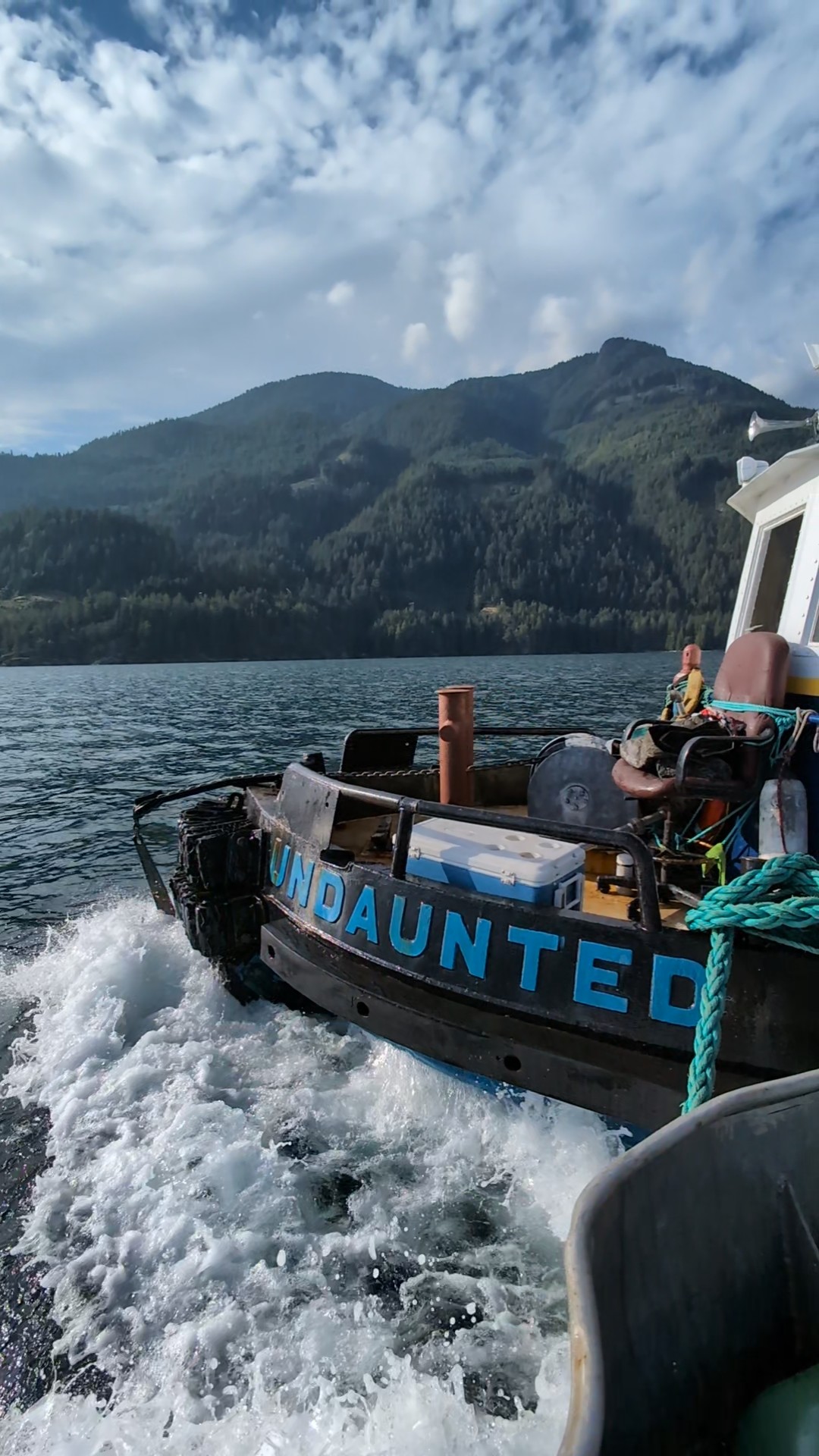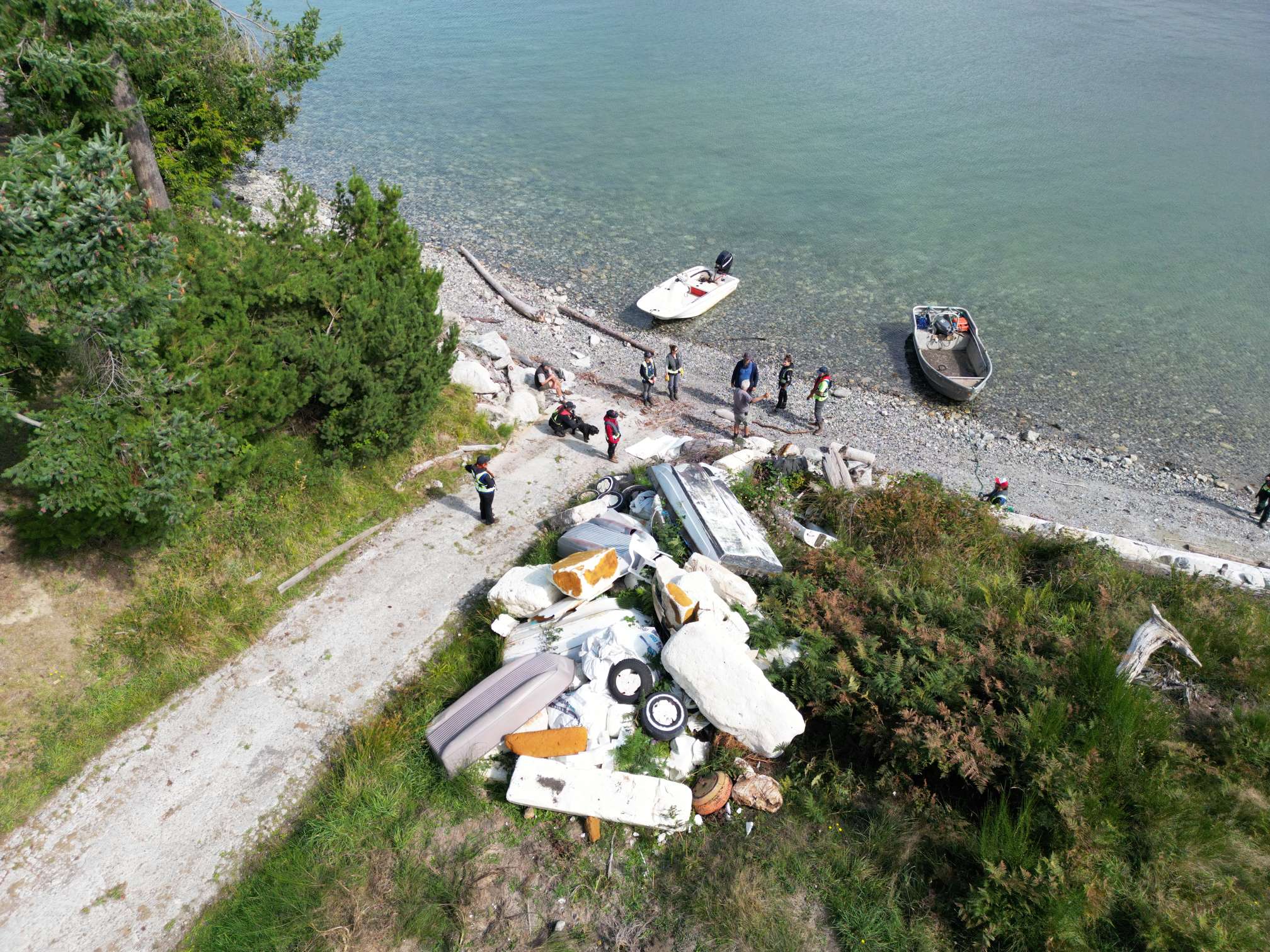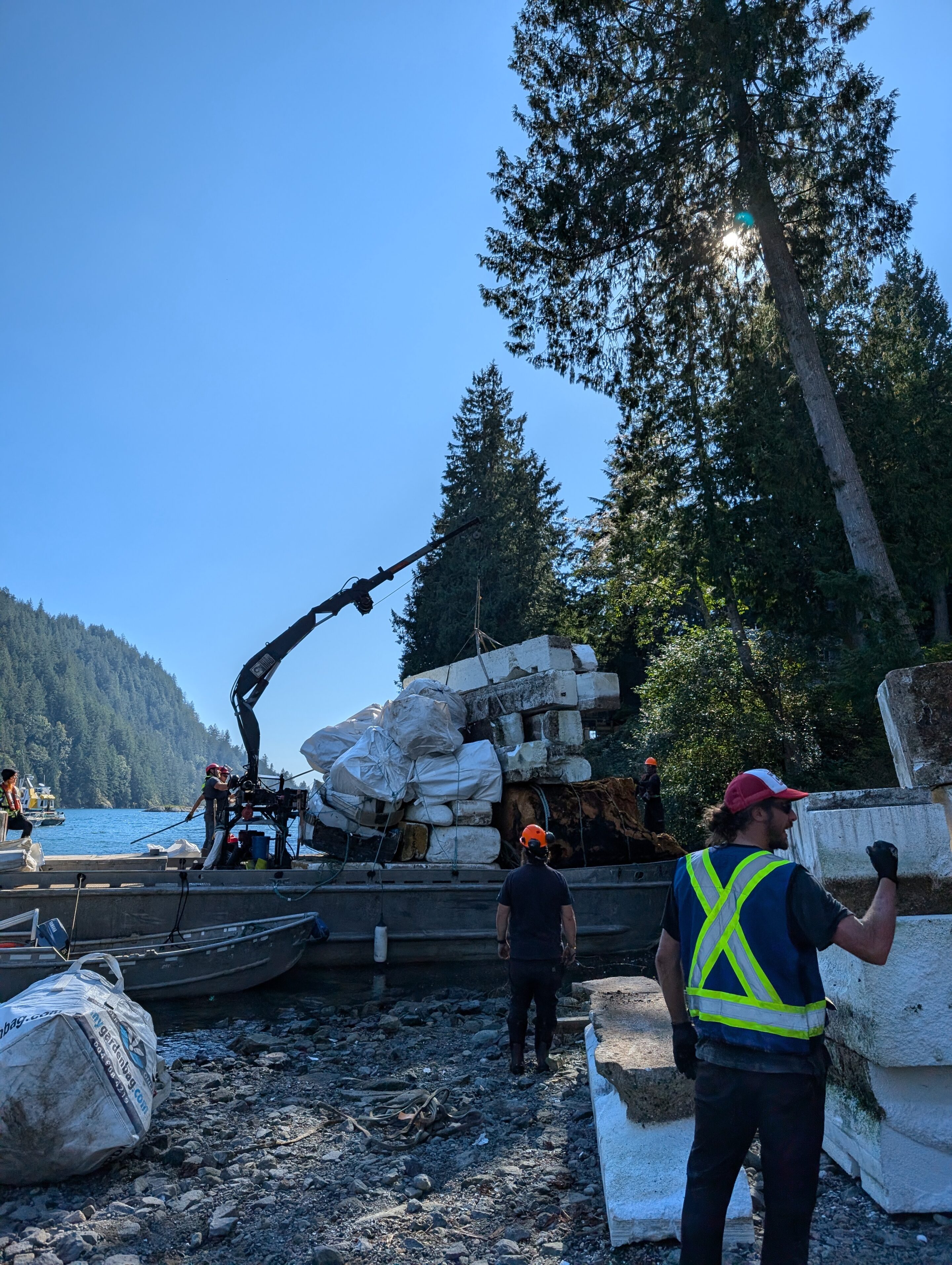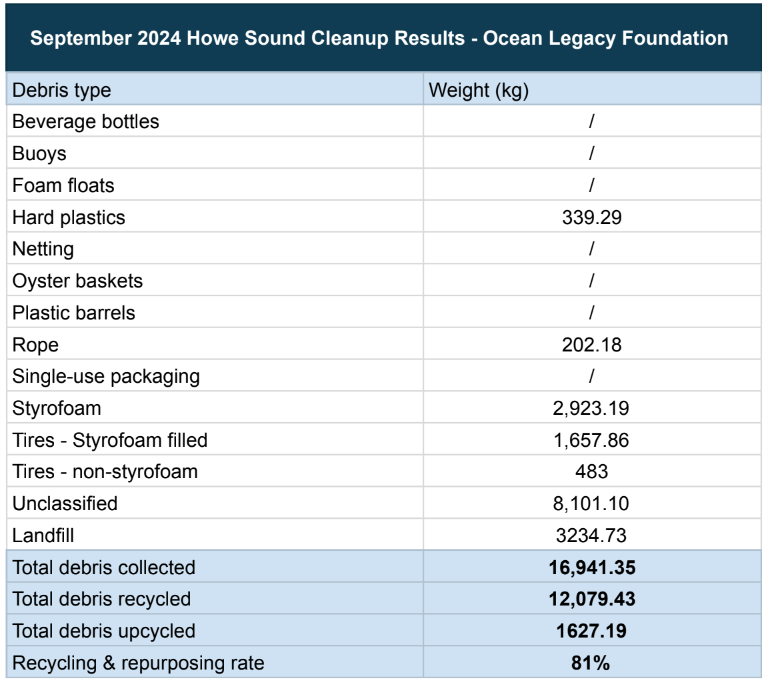Marine debris is a pressing issue in Átl’ka7tsem / Howe Sound. Winter storms can wreak havoc on coastal infrastructure, sending debris into the ocean where it is further distributed by strong winds and currents. Illegal dumping, abandoned vessels, and lost fishing gear also contribute to the problem. In recent years, the Átl’ḵa7tsem / Howe Sound Marine Stewardship Initiative (MSI) has been tracking marine debris through reports made via our Marine Debris Reporting Tool, and working with local groups to coordinate cleanup efforts.
In an effort to clean up Átl’ka7tsem’s shorelines this year, the MSI has partnered with the incredible team at the Ocean Legacy Foundation (OLF) for a large-scale, multi-day marine debris cleanup. From September 9 to 20, 2024, the OLF team worked to remove nearly 17 tons of debris from sites around Átl’ka7tsem, including Gibsons, Pasley Island, Gambier Island, south of Port Mellon, and Anvil Island.
The MSI’s Program Coordinator, Gwyn Taylor, joined the OLF crew on the tugboat Undaunted from September 9 to 13 to help with the cleanups. The crew camped remotely at Thornbrough Point, fully immersed in the wild beauty of Átl’ka7tsem.
This work was made possible thanks to funding from the Province of B.C. via the Clean Coast Clean Waters Initiative.

MSI’s Gwyn Taylor (above) joined the OLF crew for marine debris cleanups from September 9 to 13.

Cleanup locations included Gibsons, Pasley Island, Gambier Island, south of Port Mellon, and Anvil Island.



Left: The OLF crew collecting debris from Pasley Island. Middle: The Undaunted on route to clean-up sites. Right: Dinghys and supersacks full of marine debris stacked on the barge.
The crew was met with warm smiles and comments of appreciation from community members who came down to the shoreline to see what was going on. Pasley Island was no exception; here the community had been scouring their shores for tires, buoys, styrofoam, loose fishing gear, and abandoned vessels and storing them above the high tide line, just waiting for proper removal. The crew arrived and quickly got to work forming teams separating, loading, and dismantling the debris. Debris here included several tires, styrofoam, various plastics, 6 wrecked dingys that were extracted from the blackberry bushes on shore.


Above: Before and after photos of the Pasley Island marine debris clean up, taken using a small drone.
On Gambier Island near Camp Artaban the crew removed an astounding amount of 24 foot by 2 foot styrofoam blocks. To load and stack these huge foam pieces the crew had to use a crane on the barge, lifting just a few pieces at a time and placing them like jenga blocks.



Above: The crew removing massive foam blocks and many tires from near Camp Artaban, Gambier Island. The crane was used to stack large pieces on top of the barge.
The debris was all taken by boat to OLF’s facilitiy in Steveston, where it was weighed, sorted, and then either reused, recycled, or properly disposed of. From this cleanup, a commendable 81% of materials were recycled or repurposed, with only 19% going to the landfill.

The MSI is incredibly grateful for the commitment and dedication of the Ocean Legacy Foundation and communities of Atl’ka7tsem to clean and protect our local waters.
Please help us continue this important work by donating to the Howe Sound Marine Debris Fund.
Help us continue to track and remove marine debris from Atl’ka7tsem / Howe Sound by using our Marine Debris Reporting tool! These reports help inform future debris removals like this one. Nearly all the sites from this cleanup were areas where we had received reports in the past.

Above: The cleanup crew after loading many supersacks collected at Gibsons.




Recent Comments